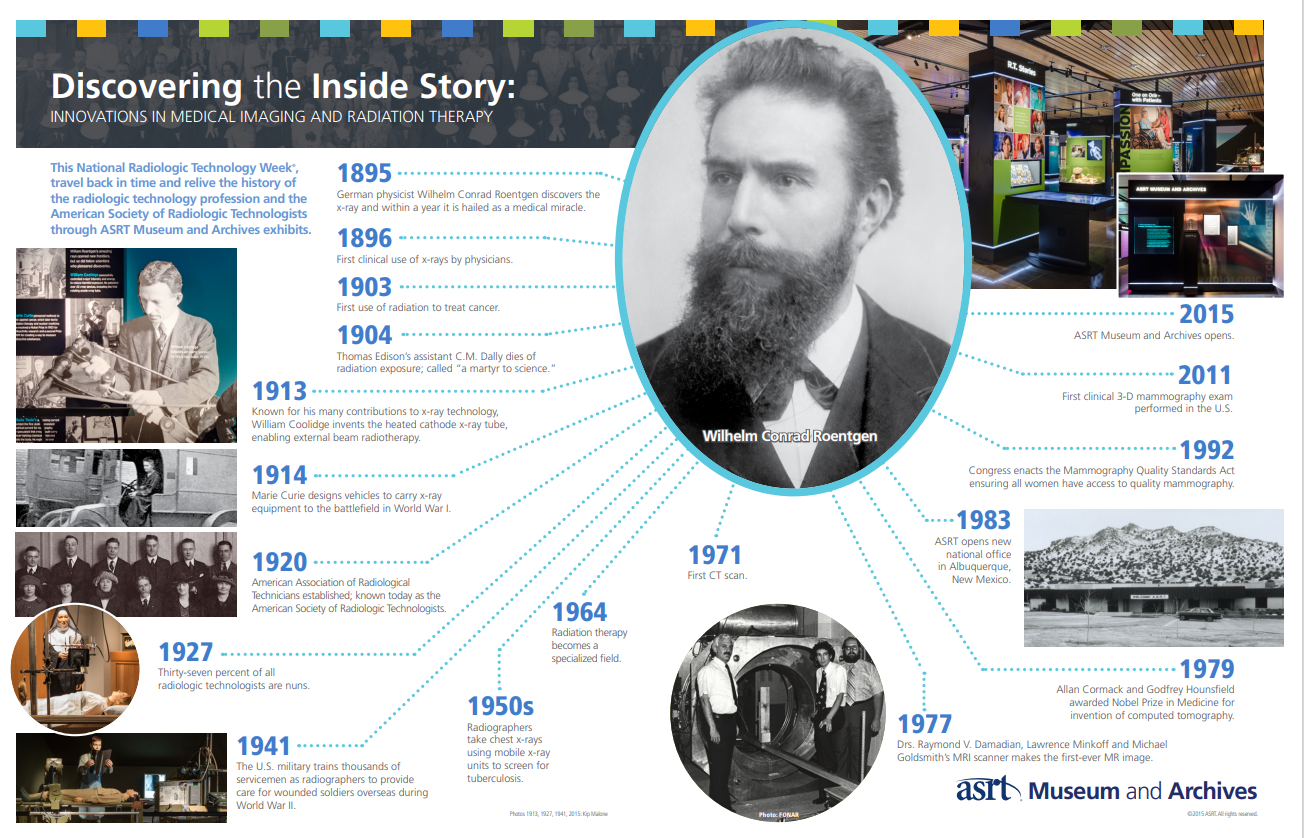From Invisible Rays to Immersive Learning: Celebrating National Radiologic Technology Week
Every modern hospital, every cancer center, every emergency department—and nearly every patient—benefits from a discovery made 130 years ago. On November 8, 1895, German physicist Wilhelm Conrad Roentgen produced the first medical X-ray image. For the first time in human history, physicians could see inside the body without lifting a scalpel.
This week, we honor National Radiologic Technology Week® by reflecting on the innovations that followed and the radiology professionals who have carried this field from a breakthrough to a global cornerstone of medicine.
A Timeline of Discovery
Roentgen’s discovery set off a century of advancement, risk, learning, and incredible progress:
1896 – First clinical use of X-rays
1903 – First use of radiation to treat cancer
1914 – Marie Curie designs battlefield imaging vehicles in World War I
1920 – The American Association of Radiological Technicians is formed—now the ASRT
1950s – Mobile X-ray units help screen for tuberculosis
1971 – The first CT scan
1977 – The first MRI image
2011 – First clinical 3-D mammography exam in the U.S.
Every step forward widened the frontier of detection, diagnosis, and patient care.
The Human Side of Radiology
While technology evolved, so did the profession. Radiologic technologists became specialists in CT, MRI, sonography, nuclear medicine, and radiation therapy. They advanced safety science. They developed clinical standards. They shaped the education pipeline that continues to train new imaging professionals each year. In emergencies, warzones, cancer centers, and community hospitals, radiology professionals have been—and remain—critical to patient safety and clinical decision-making.
Celebrating the Present. Building the Future.
Today, the radiology workforce faces new challenges:
Increasing imaging demand
More complex modalities
Training constraints
Workforce shortages
Advanced safety and quality requirements
At neuRealities, we believe the next chapter of imaging education must be scalable, accessible, and grounded in trusted knowledge. That’s why we’re building immersive, AI-enabled learning experiences that allow technologists to practice CT workflows, understand safety protocols, and learn directly from a digital expert—anytime, on any device. This is a continuation of what Roentgen began: giving clinicians clearer insight, better tools, and more substantial confidence.
Thank You to the Radiology Community
To every radiologic technologist, instructor, physicist, researcher, and imaging innovator: Thank you for your precision, your compassion, and your dedication to patient care. Your work saves lives every single day.
Happy National Radiologic Technology Week® from all of us at neuRealities!

